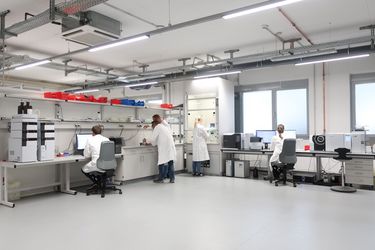From Emissions in the Interior to Chemical Resistance
Materials in the interior of cars have to comply with legislation and meet specific requirements. Emissions from these materials have a direct impact on the nose, eyes and well-being of the driver and passengers. Our specialist material testers, engineers and scientists test and evaluate emissions from plastics and other surfaces in accordance with all the current regulations to determine their suitability for use in specific areas. They also run combined material and component tests.
Our material test lab is based at four networked locations in Germany: Tappenbeck, Ehningen, Cologne and Mönsheim. Here we have access to the comprehensive Bertrandt testing infrastructure and separate lab facilities for special requirements. As well as our readily available testing capacity, our customers also value our advice on material properties and test processes. Our main focus is on the automotive industry, but we also work with other mobility sectors, such as aviation and rail.

